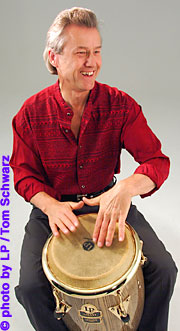"A good drummer listens as much as he plays." ~ Indian Proverb
Percussion Store Drummers Drum Lessons Drumming FAQs
International Shipping
"A good drummer listens as much as he plays." ~ Indian Proverb
Percussion Store Drummers Drum Lessons Drumming FAQs
International Shipping
![]()
![]()
Drums & Percussion
Drum Sets & Cymbals
Cymbals, Hardware & Accessories
Latin Percussion
LP Hardware, Accessories & Replacement Parts
Middle-East Drums & Percussion
African Drums & Accessories
Chinese & Eastern Drums & Percussion
Irish Drums & Percussion
Orchestra Bells & Chimes
Drum & Percussion Hardware
![]()

Heel-tips are a fundamental building block in playing the congas. They are both a basic ground for many rhythms and a springboard for conga improvisation. In this respect they resemble snare drum rudiments for the drum-set player, or scales for a melodic instrumentalist. Work with an accomplished teacher to learn the basics of heel-tips early in your conga playing, and this will save having to unlearn bad habits later.
The exercises described here are helpful for warming up before practice sessions and gigs. They can be played on conga, on tabletop, and even on laps if there are no drums available or you aren't in a position to make a lot of noise. Like any fundamental exercise, the goal is not to perform these exercises as fast as possible right away, but to learn to play them well at any tempo, and with any style of music. It is crucial to take the necessary time to build good habits into your playing!
Each of the following exercises has two hand patterns: the first is for righthanded players, the second is for lefties. Once you're comfortable leading with your dominant hand, practice the exercises while leading with the other. This will help you become more ambidextrous and independent. For advanced study, combine exercises and alternate the leading hand, creating patterns of two bars or more. You can also substitute tones and/or slaps for the different heels and/or tips in varying combinations to create an almost limitless variety of more advanced melodic exercises and patterns.
Jim Greiner is an LP Clinician. He is the percussionist with The Bill Hopkins Rockin' Orchestra, where he plays a wide range of musical styles at corporate parties and resorts around the world. Through his company, "Hands-On! Drumming Events," Jim leads community-building drum circles and celebrations for corporations, conferences, and communities throughout North America. Greiner's video, "Community Drumming for Health & Happiness," is available through handsondrum.com





![]()